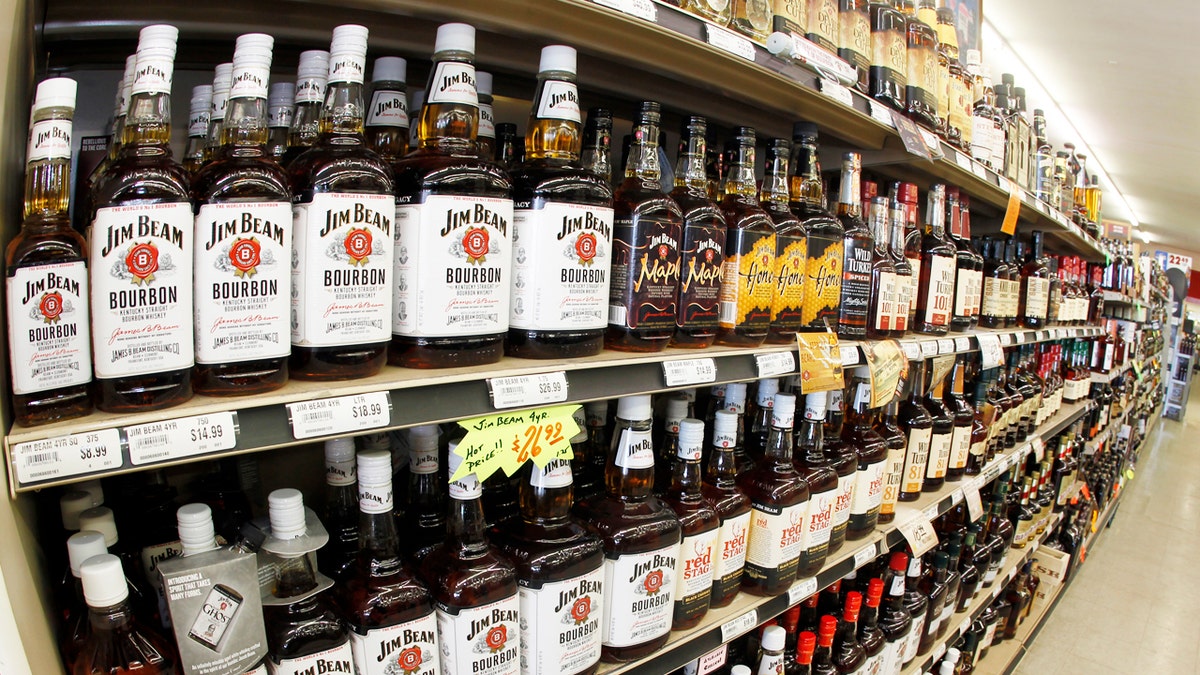
A view of the many different types of Kentucky bourbon that are produced in Kentucky are displayed at a Party Mart liquor store in Louisville, Kentucky, January 28, 2014. The Blue Grass region of Kentucky is home to the distilleries which make about 9 out of every 10 bottles of bourbon in the US. Suntory Holdings Ltd said on January 13 that it would buy U.S. spirits company Beam Inc for $13.6 billion cash in a deal that would make the Japanese company the world's third-largest spirits maker. Picture taken January 28, 2014. REUTERS/John Sommers II (UNITED STATES - Tags: BUSINESS FOOD) - RTX18QNE
As demand for liquor rises, Utah should be building more liquor stores in specific areas of the state, according to a report released on Tuesday.
The study, conducted for the Utah Department of Alcoholic Beverage Control (DABC), was presented to the state's liquor board during its monthly meeting. Liquor consumption-- both nationally and locally-- is on the rise with Utah's per capita consumption increasing from 2.37 gallons in 2010 to 2.75 gallons in 2015, according to the findings.
HOW LONG DOES ALCOHOL REALLY LAST AFTER IT'S BEEN OPEN?
Utah currently has just 44 liquor stores, with two more coming soon. But a current legislative formula only allows for one liquor store for every 48,000 citizens. With a population just over 2.9 million, the state could have 63 liquor stores (or 19 more) in total.
“This clearly demonstrates the need [for more stores],” commission chairman John T. Nielsen stated after the presentation. Nielsen said the DABC will use the data to convince the state building board and lawmakers that more liquor stores should be built in state. Still, some laws may need to be adjusted and the DABC needs approval from the individual cities affected.
“The more we make it (liquor) available, the better the revenue stream to the state,” he said.
Demand for booze in Utah is significant: average sales per square foot for liquor stores are $1,082. That’s more than the averages for Wal-Mart nationwide ($423) or Sam's Club ($680) and much closer to Costco at $1,100.
“These higher sales per square foot create positive fiscal impacts for the communities in which they are located,” the study said.
In Utah, communities receive 0.50 percent of total sales generated, while counties can receive one-eighth of 1 percent from liquor-generated revenues.
SCIENTISTS SAY HEALTH BENEFITS FROM ALCOHOL MAY BE GREATLY EXAGGERATED
With $366 million in liquor store sales in 2016, the total point-of-sale distribution to local communities was more than $1.83 million, according to the study. The report cited 12 specific regions "most in need" of new retail liquor stores, identified by their growing populations relative to the rest of the state.
The study says Utah's population is expected to grow by at least 1 million residents by 2030.
